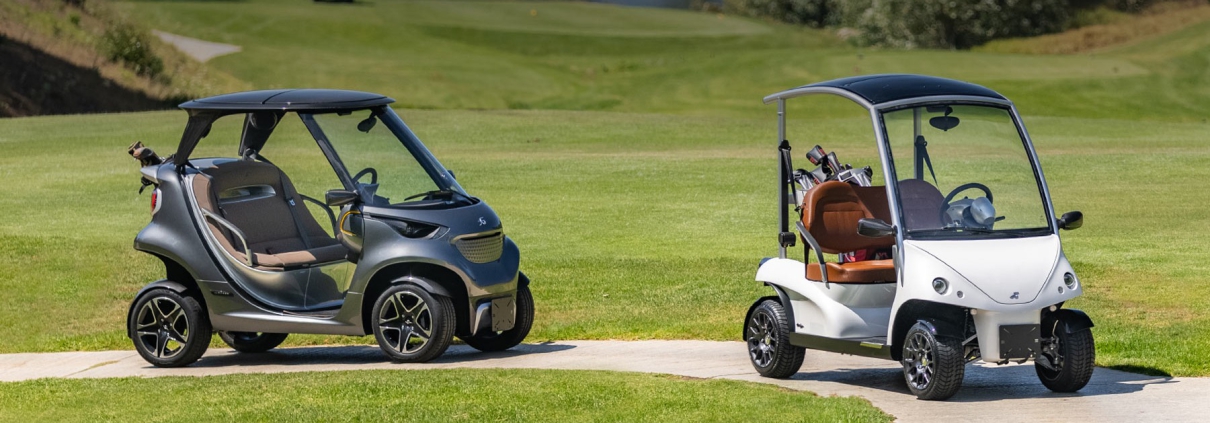How to Recharge Golf Cart Batteries the Right Way: Practical Charging Tips, Maintenance Insights, and Lithium Efficiency Advantages
Golf carts are a convenient, eco-friendly mode of transportation for golf courses, resorts, and various fleet operations. But keeping them running efficiently requires more than just plugging in the charger. Proper battery recharging is crucial for extending battery life, maximizing performance, and ensuring safety—especially when managing multiple vehicles in a fleet.
This article provides practical guidance on recharging golf cart batteries safely and efficiently while highlighting how lithium batteries can improve fleet operations without diminishing the value of traditional battery types.
- Know Your Battery Type Before Recharging
Before plugging in, it’s essential to understand what type of battery your golf cart uses, as charging requirements differ significantly:
- Lead-acid batteries: These are widely used and relatively inexpensive, but they require longer charging times and can be prone to sulfation if not maintained properly.
- Lithium batteries: Offer faster charging, longer cycle life, and minimal maintenance. Unlike lead-acid, they don’t require regular watering or equalization charges.
Tip: Using the right charger for your battery chemistry ensures optimal performance and longevity. For fleets considering upgrades, lithium battery for golf cart solutions can provide higher efficiency and longer operational uptime.
- Step-by-Step: How to Recharge Golf Cart Batteries Safely
Following safe and systematic charging procedures helps prevent damage, accidents, and premature battery wear:
- Inspect the battery first
Ensure terminals are clean, corrosion-free, and connections are tight. - Choose the correct charger
Always use a charger compatible with your battery type and voltage. - Connect in the proper order
Avoid sparks by following the recommended positive-first, negative-last connection sequence. - Monitor the charging process
For lead-acid batteries, follow bulk, absorption, and float stages. For lithium batteries, BMS (Battery Management System) often automates charging safely. - Check post-charge conditions
Measure terminal voltage, check temperature, and ensure the battery is fully charged before disconnecting.
Pro tip: Modern lithium batteries include BMS protections that prevent overcharging, reduce maintenance needs, and simplify fleet operations.
- How Lithium Charging Improves Fleet Efficiency
Lithium batteries not only charge faster but also provide operational advantages that can translate into economic benefits for fleet managers:
- Faster Charging, More Uptime
Lead-acid batteries may require 8–10 hours to fully charge, whereas lithium batteries often recharge in 2–3 hours. This means vehicles can operate multiple shifts per day, enhancing fleet utilization. - Partial Charging Flexibility
Lithium batteries allow for “top-up” charging without risking capacity loss, unlike lead-acid batteries which suffer from memory effects if partially charged frequently. - Lower Energy Loss
Lead-acid batteries lose roughly 15–20% of energy as heat during charging. Lithium batteries typically achieve about 95% charging efficiency, lowering electricity costs over time. - Integrated BMS for Smarter Charging
Lithium batteries’ built-in BMS manages cell balancing and voltage regulation automatically, reducing human error and extending battery lifespan.
While traditional lead-acid batteries remain a reliable choice, lithium technology offers significant advantages in operational uptime and charging convenience—factors critical for modern fleet efficiency.
- Charging Best Practices to Extend Battery Life
Even with lithium batteries, proper charging habits help maximize longevity:
- Keep the battery and terminals clean and well-ventilated during charging.
- Avoid discharging below the recommended voltage threshold.
- For seasonal storage, maintain batteries at roughly 50–70% charge.
- Use smart chargers or automatic cutoff devices to prevent overcharging.
- Troubleshooting Common Charging Issues
| Issue | Likely Cause | Recommended Action |
| Battery not charging fully | Sulfation (lead-acid) / cell imbalance (lithium) | Perform equalization or BMS reset |
| Charger won’t start | Loose connection / incorrect charger profile | Check wiring and settings |
| Battery overheating | Poor ventilation or overcurrent | Improve airflow or reduce charge rate |
- When to Replace Instead of Recharge
Knowing when to replace a battery can prevent downtime and higher long-term costs:
- Charge times have increased significantly.
- Battery fails to reach full charge or discharges quickly.
- Voltage fluctuations or abnormal heating occur.
Upgrading to a lithium battery may improve efficiency and reduce maintenance needs, especially for fleet vehicles that require consistent uptime.
- Further Reading
For readers who want to deepen their understanding of golf cart batteries and maximize fleet performance, consider these guides:
- How to Test Golf Cart Batteries: Step-by-Step Guide for Lead-Acid and Lithium Systems – Learn practical steps to test your batteries before and after charging to ensure optimal performance.
- Best Lithium Golf Cart Batteries: How to Choose What’s Right for You – Explore key factors for selecting the right lithium batteries that balance efficiency, lifespan, and operational needs.
- Conclusion
Proper recharging is essential to maintain golf cart battery health and ensure reliable operation. Understanding your battery type, following safe charging procedures, and applying best practices can extend battery life, improve fleet efficiency, and reduce operational costs.
For fleets considering future upgrades, lithium batteries offer fast charging, higher efficiency, and reduced maintenance, making them a strategic choice for high-utilization vehicles.


